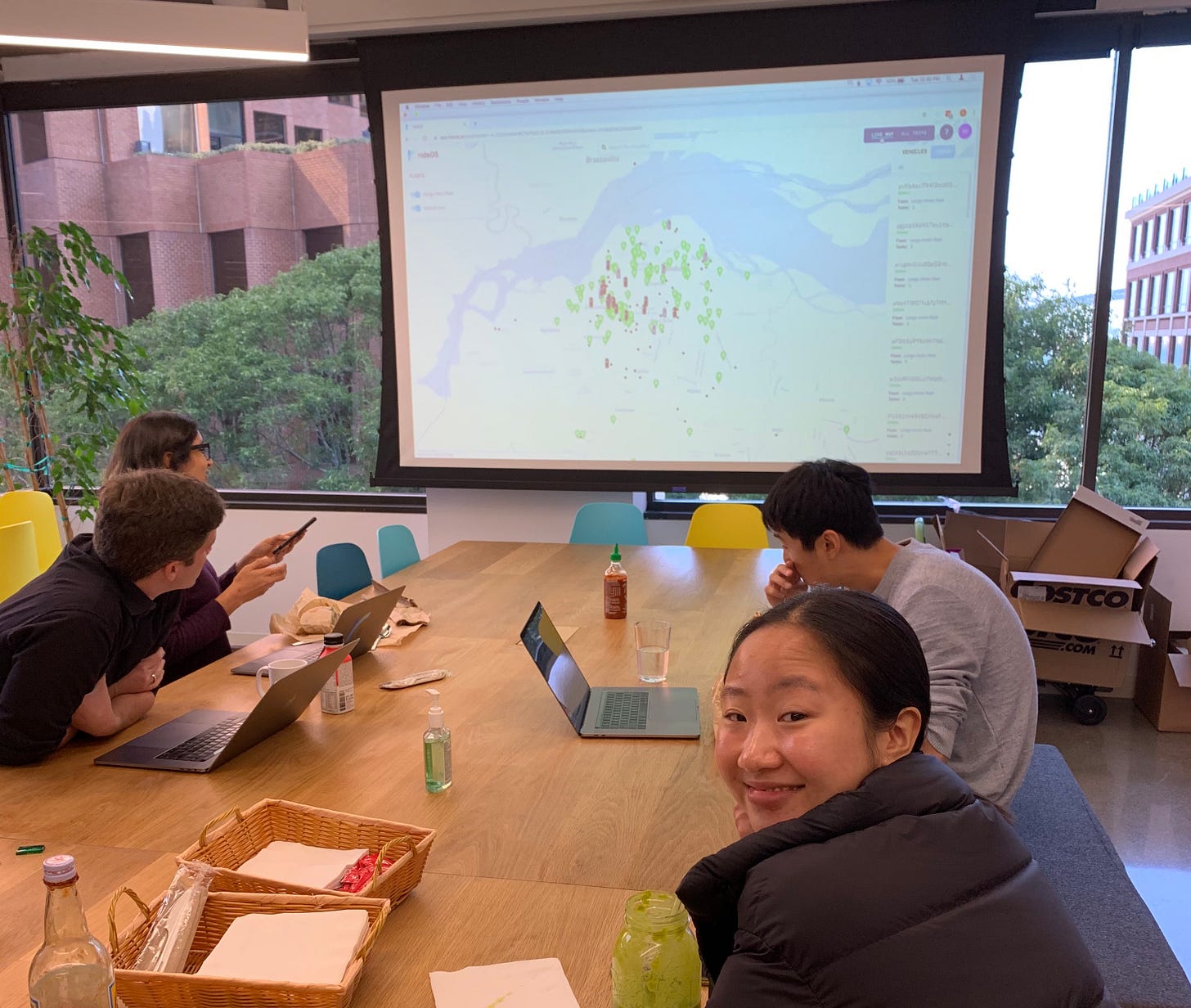How we got early product usage in the most unexpected places…
Do good while building value for your startup
For the first few years of rideOS, we had very little product usage. Although we signed large self driving commercial contracts with OEMs, these fleets only used our products for investor demo days. Other partners were reluctant to outsource technology that they regarded as core. Without usage and feedback, our products were not improving.
One day, we received an email from a CEO of a motorbike ride hail service operating out of Kinshasa, a city in the Democratic Republic of Congo. They were growing rapidly, but their systems were failing to hold up. We signed a contract to license our software to them for free, in return for a rapid integration and the promise of high fidelity feedback.
A few weeks later, a teammate excitedly showed me a map of Kinshasa, with dozens of vehicles moving across the city. Little did we know that the first live fleet we would power would come from an on-demand motorbike ride-hail service in Africa!
This customer was the first fleet to break our services, and we learned a ton from this partnership:
We had scalability and reliability problems. We could dispatch a few vehicles easily, but scaling up to support a few thousand motorbikes created new challenges. One evening, our dispatch engine rejected 75% of the trips customers were summoning. We had a lot of bugs to fix, and we needed to set up an on call rotation. It was a stressful time, but also exciting to see our products being used in the real world.
We needed to build new features to make our services valuable. We learned that theft and passenger safety were issues, so we built in the ability to dispatch two motorbikes to each pickup. The first motorbike would pickup the passenger, and the second would stay close by for safety reasons. To our surprise, the first live use case was using our estimated time of arrival service (ETA) to calculate fares for their riders.
Working with companies with a burning need for your products leads to faster iteration cycles. Public transport was broken in Kinshasa, so the motorbike service was one of the safest and most reliable ways to get around. Their growth was leading to cash burn issues, and they truly needed a partner to help them scale and bring down costs. They were extra motivated to quickly integrate our technology.
While we started this engagement with this partner with the intention of doing good, it also brought us valuable product and business learnings. It turns out you can do good while also building value for your startup.
There is no silver bullet to finding product market fit, but getting recurring product usage is one very important component. Product usage helps you to validate the product you are building is solving a customer pain point, helps you improve the product through rapid iterations, and focus on building features that truly matter.
For us, the path to find product market fit meant thinking global from day 1. It meant serving customers in the Democratic Republic of Congo. It meant developing a culture of customer obsession and building features off the roadmap. It meant pivoting from self driving to delivery and logistics during the pandemic.
If you're interested in connecting with the ecosystem in Africa to get initial usage and feedback, feel free to shoot me an email! :)

